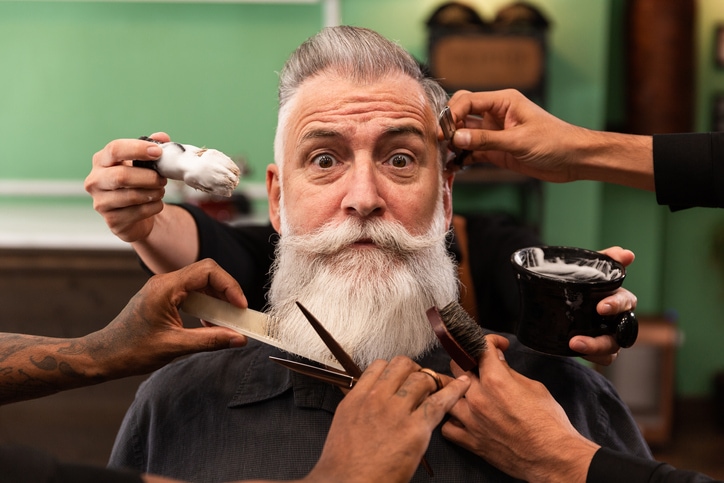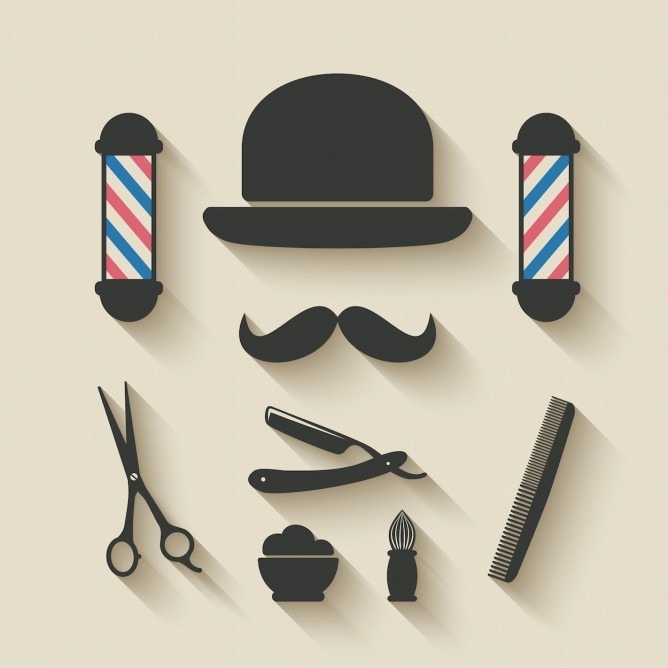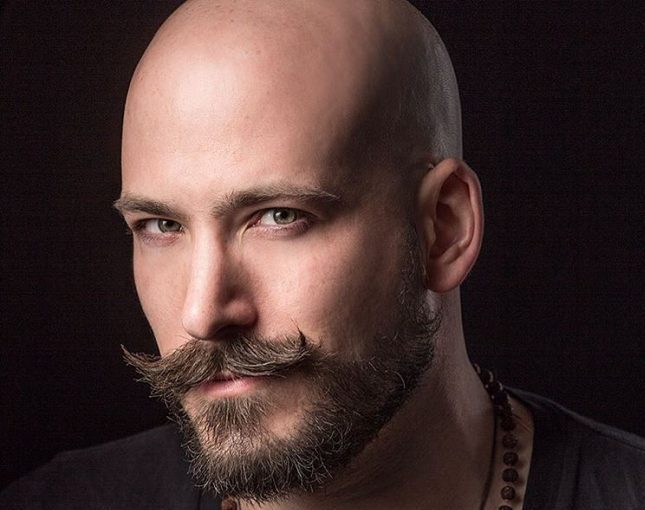How to Grow A Mustache: Get a Thick and Healthy Mustache
Growing a mustache is an art that takes time and finesse to achieve. Embarking on the journey to grow a thicker, and full mustache can be an exciting and rewarding experience. It allows you to express your individuality with a bold fashion statement.
You may want to grow your upper lip hair for the first time or replace your current mustache style with a thick style. Many men may wear a mustache for practicality, fashion, or for a brand-new look.
Mustaches have been said to attract members of the opposite gender, repel insects, and protect from sunburn and frostbite. You can even keep a beard and mustache in the creative industry and for some job interviews too.
Whatever reasons you have for growing a mustache, you will get to know everything about growing a mustache in this grow mustache guide. From how to grow a thick, full mustache to some of the most common questions regarding mustaches including some mustache fun facts, we have researched everything related to growing a mustache that is thick, fuller and healthy.
The Short History of Growing Mustache

Throughout history, facial hair has been subject to various opinions and trends. During the 17th century in Europe, beards and mustaches fell out of fashion, partially due to a tax on beards instituted by a czar.
In the early 19th century, mustaches became popular again. They were often paired with sideburns and styled elaborately. During the Crimean War in the mid-1800s, soldiers grew heavy facial hair. When they returned home, beards became a symbol of heroism.
Growing a toothbrush mustache became one of the most hated mustache styles of the time of World War II because of Hitler.
In 2003, a group of friends in Melbourne started growing mustaches to raise money for the Prostate Cancer Foundation of Australia. The following year, the idea spread to other countries.
With a similar idea, a group of friends in Chicago started a Facebook group called “No-Shave November” in 2009. The event has gained popularity and today it is known as “Movember” (a portmanteau of “mustache” and “November”). Since then, men around the world grow a mustache and beard in the month of November.
How to Grow a Thick, Healthy Mustache?

Contrary to what you may think you already know, growing a mustache is a lot more than simply having enough hormonal energy to summon follicles from the depth of your pores; there’s a process, and to have a great ‘stache, its steps have to be followed and respected. Here’s a breakdown of how you can grow a thick and healthy mustache:
1. Learn the Basics

In order to grow a mustache successfully, you’ll need to learn some basics. The first thing I’d recommend is learning the factors that affect your mustache growth and thickness.
There are several factors that affect mustache growing a thick and healthy mustache such as: genetics, age, hormones, diet, medications, and lifestyle. Take a look at these important factors:
- Genetics: Some individuals are simply predisposed to have thicker and fuller facial hair than others.
- Age: Mustaches usually start to thicken and fill out in the late teens and early twenties.
- Hormones: Testosterone is the hormone responsible for the growth of facial hair, including mustaches.
- Diet: A diet that is rich in protein, vitamins, and minerals can promote facial hair growth.
- Medications: Certain medications can impact mustache growth.
- Lifestyle: Your lifestyles like sleeping routine, stress, and smoking habits can have a detrimental impact on mustache growth.
Secondly, you should know how to trim and train your mustache. Aim for covering your entire upper lip completely, but not so long that you end up with hair in your mouth when drinking or eating.
2. Let The Mustache Grow

Depending on the length of the stages of your mustache growth and how fully it completes itself, growing a thicker mustache can take over a month. Wait it out. If you have a patchy mustache, check out our post about how to fix patchy mustache.
The size of the mustache will also play a large part in the final result. If it is too large, you will look like a mountain man with a creepy mustache. If it is very short or too narrow, you may look like a version of Count Dracula or Adolph Hitler on steroids.
3. Maintain a Healthy Diet
A well-balanced diet is crucial for hair growth. Make sure you’re consuming enough vitamins and minerals, such as biotin, zinc, and iron. These nutrients promote hair growth and overall health. Foods like eggs, fish, lean meats, and nuts are great sources of these vital nutrients.
4. Stay Hydrated
Drinking plenty of water is essential for overall health, including hair growth. Proper hydration helps your body function at its best, ensuring optimal conditions for growing a healthy, thick mustache.
5. Exercise Regularly
Regular exercise is known to boost circulation, which can stimulate hair growth. Additionally, exercise helps reduce stress, which can negatively impact hair growth. Aim for at least 30 minutes of moderate exercise daily.
6. Get Adequate Sleep
Getting enough sleep is crucial for overall health, including hair growth. Aim for at least 7-8 hours of sleep each night to provide your body with the rest it needs to grow a thicker, healthier mustache.
7. Groom It with Your Favorite Grooming Tools

Having proper grooming tools is essential for a thicker, healthier mustache. Regularly trimming and shaping your mustache will help maintain its appearance and promote growth. Use a quality mustache comb and scissors, and trimmers to keep your mustache looking its best.
8. Use Mustache Care Products
Investing in mustache care products like mustache waxes, oils, and balms can help improve your mustache’s health and appearance. These products provide nourishment and hold, making your mustache appear thicker and more robust.
9. Massage Your Face
Massaging your face can help stimulate blood flow, encouraging hair growth. Use your fingertips to gently massage your upper lip and the surrounding area for a few minutes each day.
10. Keep Your Face Clean
Keeping your face clean is essential for hair growth. Dirt, oil, and dead skin cells can clog hair follicles, hindering mustache growth. Wash your face daily with a gentle cleanser to maintain a healthy environment for hair growth.
11. Be Persistent
Growing a killer mustache is, after all, an exercise in patience. It takes time and dedication. Stick with your grooming routine, and don’t be discouraged if progress seems slow. With persistence and proper care, you’ll be well on your way to a thicker, healthier mustache.
Growing a thicker, healthy mustache is achievable with patience, proper grooming, and a healthy lifestyle. By following these tips, you’ll be well on your way to a fuller, more impressive mustache. Embrace the journey and enjoy the process of transforming your facial hair.
Tips for Rocking Your Mustache

You have done all the hard work for growing a thick and healthy mustache. Here are some tips on how you can make it look good
- Try different mustache styles to find the one that suits you best.
- Maintain your mustache by trimming and shaping it weekly or bi-weekly (according to your beard growth).
- Wash your mustache regularly to remove dirt and oil.
- Keep the skin beneath your mustache healthy and moisturized.
- Look for famous mustaches or online resources for ideas and guidance.
- Celebrate the individuality that your mustache brings to your appearance.
To help the mustache stand out, also consider performing a trimming.
Watch the following video on How to Trim a Mustache
Mustache Grooming: What Experts Say
All mustaches require a certain amount of maintenance to keep the distinction between the mustache and the rest of your facial hair obvious. In order to keep it looking professional and not unkempt, trimming often will be required. Unlike stubble or that rugged and handsome look where you can wait a few days between shaves, maintaining a mustache will most likely require at least daily trimming.
Caring for a mustache is not difficult. Use a comb or your fingers if the mustache begins to look like it could use some help looking good. If you notice that the skin underneath is itching or feels scratchy, use a little beard oil to help ease the symptoms. Unless you are trying to look especially sophisticated, don’t worry about mustache wax at this point.

There are several common mistakes that amateur mustache grower makes when defining and trimming their facial hair. One of these ways is to groom the mustache edges horizontally, creating dissonance with the natural shape of the mouth.
To achieve balance, trim the edges diagonally to create a natural look that follows the contours of the ends of your mouth. Following this program is a great way to help the mustache build up strength and density for a full, healthy look. Rather than create a sharp horizontal line, aim for a more natural, diagonal droop around the mouth that complements the natural curves of your lips.
Along with ensuring that the angles you choose for your mustache are ideal, you will also need to ensure that you avoid hairs that have a tendency to enter the mouth. The key here is to keep the mustache strong on the lip right to the edges of the lip line while maintaining a clear distinction between the mustache itself and your mouth. There is perhaps nothing so aggravating than experiencing bits of hair in your mouth from your mustache while you are eating or drinking.
You will also want to consider avoiding the use of beard oil on a mustache that is still in its infancy. Until the mustache had grown to about an inch in length, it’s a much better use of your money and time to use a beard moisturizer. Beard moisturizers not only strengthen the hair, but they also help treat dry skin beneath the mustache and can help alleviate any irritation resulting from growing the mustache out.
Towards the end of a month’s time, when the mustache has reached a point of relative maturity, you can feel free to use a drop of pomade or beard oil to define the mustache and to create a bit of a shine. Unless your facial hair grows at a tremendously rapid rate, it’s unlikely that you will be able to use hair products on the mustache before the two-to-three-week mark.
Although you can certainly shave the rest of your face according to your own personal specifications, clean-shaving the rest of your face will really make the mustache stand out. The tighter the shave around the mustache, the more definition you will get from the look. If you use wet shaving and keep any stubble to a bare minimum, your mustache will make a much greater visual impact.
Must Try Mustache Styles
Do’s and Don’ts When Growing Your Mustache
So, you’ve grown the mustache of your dreams. But, how do you ensure its quality? How do you make one that’ll be remembered for generations to come? Easy – follow these tips to keep it looking clean and regal:
- DO grow it as long as you want. While there’s a time and a place for slim and trim ‘staches, if that’s not your style, don’t try to make it. Embrace the style of the coveted English Mustache by growing your hair as long as it needs to be. It may take over a year to get it to your desired length, but it’ll be worth it.
- DON’T go crazy with touching your own ‘stache. Not only will it possibly come off as slightly malevolent, dastardly, or even creepy, but it can also make your ‘stache look haggard and oily. Style it, then leave it. Done.
- DO take pride in your mustache. These beauties aren’t for everyone. Actually, they aren’t for anyone but you. So, take pride in what you’ve created. If you’re self-conscious about the stark symbol of masculinity that’s taken residence on your upper lip, your demeanor will make it look less like a bastion of badassery, and more like a dead animal parked itself on your upper lip. If you’ve grown it, you’ve got to own it.
- DON’T over style your mustache. It’s easy to get carried away with all of the crazy things you can make out of a good patch of lip hair; however, less is often more when you’re styling. Leave the stepped patterns and razored designs for the sides of Kanye’s head. A chevron, a pencil ‘stache, an English ‘stache; the world is your oyster, but keep it classy.
Some Interesting Myths and Facts About Mustache

Myth 1# Shaving makes mustache grow back thicker
Fact: Shaving or trimming does not make your mustache grow back thicker. This is a common mustache myth, but the mustache facts say, shaving simply removes the hair above the skin’s surface. New growth may appear darker or thicker due to the blunt ends caused by shaving.
Myth 2# Minoxidil can thicken every type of patchy mustache
Fact: While rogaine(minoxidil) does work for beards and mustaches of certain types, mustache gaps and thin hair caused by genetics can not be treated by minoxidil.
Myth 3# Everyone can grow a thick mustache
Fact: Not everyone can grow a thick mustache due to factors like genetics and hormones. Some men may have patchy or sparse facial hair growth. However, following the tips in this article can improve your testosterone hormones and increase the chance of growing a thick, full beard.
Famous Mustache Stories
- The world’s longest mustache was recorded in India. Ram Singh Chauhan was measured for the Guinness Book of Records in 2010. At this time, his mustache was more than 13 feet long.
- A piece written during the Depression strongly recommended that you shave off the mustache. Having a mustache could be construed to mean that you were a dandy who was more worried about his appearance than about hard work.
- Mustache means different things in different societies. In the Middle East, the mustache is synonymous with high status. If someone has enough spare time to attend to the hair on their upper lip, they were considered to be pretty well off. In Middle Eastern culture, the presence of a mustache can also represent the wisdom of the one wearing it. The larger the mustache, the wiser the wearer.
Frequently Asked Questions on Growing A Mustache
Q1: How long should a mustache be?
Ans: The length of a mustache will be dependent on the shape of your face and the style of mustache/beard you are looking to create. As an example, a person with a round face will look best with a Van Dyke style, while triangular faces will look best when the beard is allowed to grow out more fully than the mustache.
Q2: Is it necessary to trim a mustache frequently?
Ans: Yes and no. Yes, if you are maintaining an extremely chiseled appearance that has no allowance for stray hairs. No, if you are looking for a rougher and wilder look. However, to retain the shape of any mustache, regular trimmings will be in order. It’s recommended that you trim your mustache at least two times a week, although you’ll need to trim it more often if you have facial hair that grows at a rapid rate.
Q3: How long does it take to grow a thick mustache?
The time it takes to grow a thick mustache varies for each person. It depends on factors like genetics, age, and overall health. On average, facial hair grows about ½ inch per month. Be patient and give your mustache time to grow.
Q4: Can I use beard oil on my mustache?
Yes, you can use beard oil on your mustache. Beard oil is designed to moisturize, nourish, and soften facial hair, promoting a healthier appearance. Apply a few drops to your fingertips and gently massage the oil into your mustache.
Q5: How often should I trim my mustache for optimal growth?
Trimming your mustache every 2-4 weeks is a good rule of thumb for maintaining its shape and promoting growth. Regular trims help remove split ends and keep your mustache looking tidy.
There you have it! You are now part of an elite club with a distinguished history of masculinity and downright coolness. Carry yourself confidently, and enjoy your thick and healthy mustache!




![30 Sensational Short Boxed Beards [2024]](https://beardstyle.net/wp-content/uploads/2016/12/boxed-beard.jpg)

![35 Iconic Goatee Styles for Black Men [2024]](https://beardstyle.net/wp-content/uploads/2018/11/black-men-goatee-styles-13-768x513.jpg)
A couple weeks in, start using one because it trains the mustache hair to go off to the side, Causgrove says, so that your stache looks more natural, and it will be easier to control it if and when you do begin the styling process.